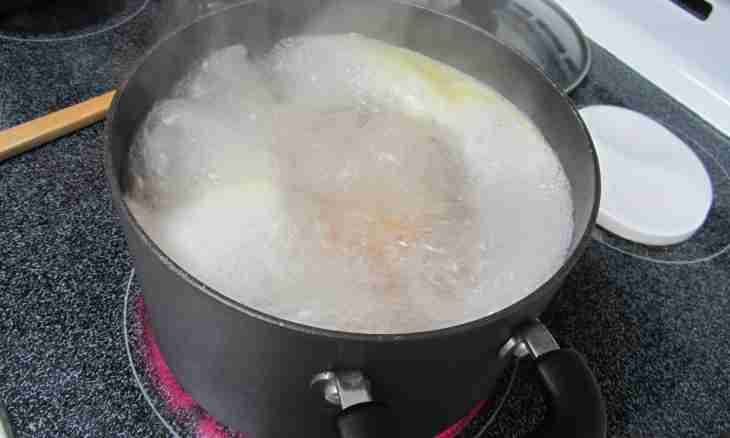People face water boiling daily. Whether it is necessary to cook soup or a garnish for second course, or there is a wish to drink hot tea, coffee, - anyway not to do without boiling of water. And very few people, watching the raging water, think: and why, actually, it begins to boil? What physical processes happen in it?
Let's track boiling process, since that moment when on heated day of a vessel (a pan or a teapot) the first bubbles are formed. By the way, and why they are formed? Yes because the thin water layer which is directly adjoining to a vessel bottom heated up to temperature of 100 degrees. And, according to physical properties of water, began to turn from liquid state into gaseous.
So, the first bubbles, still small, begin to emerge slowly – the pushing-out force in a different way called Archimedean acts on them – and almost at once again fall to a bottom. Why? Yes because from above water is still insufficiently heated-up. Having adjoined to colder layers, bubbles "are kind of wrinkled", lose volume. And, respectively, Buoyancy force immediately decreases. Bubbles fall by a bottom, and weights of a water column "burst" at most.
But heating continues, all new and new water layers accept temperature close to 100 degrees. Bubbles do not fall by a bottom any more. They seek to reach a surface, but the topmost layer is still significantly colder therefore, having adjoined to it, each bubble decreases in sizes again (because a part of the water vapor concluded in it, being cooled, turns into water). Because of it it begins to fall down, but, having got to the hot layers which already accepted temperature of 100 degrees again increases in sizes. As the condensed steam becomes steam again. A huge number of bubbles scurry about up, down, alternately decreasing and increasing in sizes, making characteristic noise. And here, at last, there comes the moment when all water thickness, including the topmost layer, accepted temperature of 100 degrees. What will occur at this stage? Bubbles, rising up, freely reach a surface. And here, on limit of the section of two environments, there is "swirling": they burst, releasing from prison water vapor. And this process on condition of constant heating will continue until all water does not boil away, having turned into gaseous state. It is necessary to consider that temperature of boiling depends on atmospheric pressure. For example, highly in mountains water boils at temperatures smaller, than 100 degrees. Therefore inhabitants of highlands need much more time to cook to itself food.

